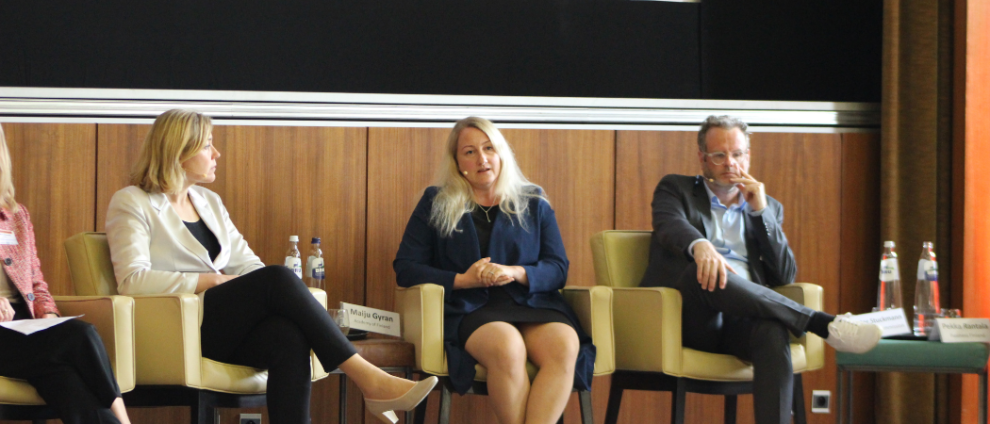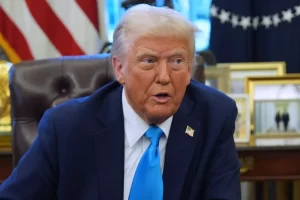6G could be the tractor that hauls Europe back to the forefront of the digital economy. That was the view of participants in a Science|Business workshop focused on whether Europe is ready to lead the race to develop and deploy 6G – the next generation wireless technology.
“Europe needs growth and jobs,” noted Pekka Rantala, Head of the 6G Bridge programme at Business Finland, which supported the workshop. “And in my very biased view, 6G is the key [area] where Europe could take a leading role regarding digitalisation globally. … in the 6G era, the business opportunities are 35 fold versus 5G.”
As well as delivering major advances in cellular technology, 6G promises to encompass satellite-based connectivity and short-range personal area networks, as well as new functionalities, such as automated sensing of nearby objects. Rantala contended that the technology could enable a step change in the quality of personalised healthcare, while also delivering dynamic digital models that could help us take better care of the planet.
Earmarked for commercial launch around 2030, 6G is still at the conceptual stage. But European stakeholders are investing significant sums in related R&D, encompassing a wide range of enabling technologies, including semiconductors, software-based network infrastructure, advanced materials, and artificial intelligence.
The four year 6G Bridge programme (funded by Business Finland), which began this year, has a budget of €130 million, while the EU’s European Smart Networks and Services Joint Undertaking (SNS JU) has an EU budget of €900 million for the period 2021-2027. Finland’s basic-research focused 6G Flagship programme (funded by Academy of Finland) has already published over 2,500 pages of studies and 13 white papers, Rantala said.
The advent of an immersive 3D Internet, sometimes referred to as a metaverse, is one potential driver of a step-change in demand for wireless network capacity. Although the metaverse is now encountering some scepticism, the workshop participants said that 6G will be needed anyway.
For example, Peter Stuckmann, Head of Unit, Future Connectivity Systems, at the European Commission, suggested that video conferencing will be displaced by far more immersive and user-friendly communication formats.
In a similar vein, MEP Henna Virkkunen predicted that the world will keep finding new applications for connectivity, just as it has found many applications for electricity. For her, the development of an energy-efficient 6G system, which could be used to detect excessive greenhouse gas emissions and other environmental threats, is closely aligned with the EU’s digital and green transitions.
In early June, the US and Finland signed a joint statement on cooperation in advanced wireless communications. At the signing in Helsinki, Anthony Blinken, US Secretary of State, noted: “To maximise technology as a force for good and to minimise its misuse, it is vital that countries that support these freedoms maintain leadership in cutting-edge technologies.”
Who does what?
But how can Europe leapfrog ahead of other regions to lead the development of 6G? Maiju Gyran, Senior Science Adviser, Coordinator of the Flagship Programme, Academy of Finland, suggested the EU needs to build competence clusters anchored by universities, and funded by a combination of tax payers’ money and private investment. “That’s a partnership, of course, I think this is the only model that works nowadays,” she added.
That view was echoed by Maarit Palovirta, Senior Director, regulatory affairs, European Telecommunications Network Operators’ Association. But she warned that standardisation processes can be quite resource-intensive for the private sector. “When we start to think about Europe will lead, will Europe follow, we need to make sure that we actually have enough experts across the board as part of these processes,” she cautioned. “And I think that’s … a bit of a concern from our side.”
Both Palovirta and Stuckmann stressed the need to involve the entire value chain, including the businesses that will ultimately use 6G, at an early stage. That is one of the lessons from the patchy deployment and uptake of 5G.
While Europe is home to two of the leading telecoms equipment suppliers worldwide (Nokia and Ericsson), in much of the continent 5G coverage lags behind that in East Asia and North America. Palovirta said it will take time and “massive investment » to fundamentally redesign today’s telecoms networks. It will take the “next 10 years to go through this shift to move towards these new intelligent, automated, software programmed networks,” she added.
Still, 2023 could prove to be a crucial year for 6G’s development. That’s because the World Radiocommunication Conference in November will consider whether to identify more spectrum for cellular technologies. The outcome is far from clear: most of the potential spectrum bands either have incumbent users, such as satellite and defence communications, or are also being targeted by other sectors for other applications.
With the tense geopolitical situation, there is also a risk that some third countries regard 6G as a strategic technology they need to control, leading to global fragmentation. Still, Europe, which has considerable experience in international coordination of R&D, could provide a valuable counterweight to such forces, according to Stuckmann, who said there remains strong global support for the cellular standards body 3GPP.
Although Virkkunen flagged that the EU is now carefully screening third-countries’ involvement in critical infrastructure following “some wake-up calls”, the panel stressed the successful development of 6G will require global R&D talent. “In science you usually work with the best,” noted Gyran. “The landscape has changed and… we have to be more cautious….but hopefully in the future, we know more and we are able to open up more….at least for science.”
Source: Science Business































